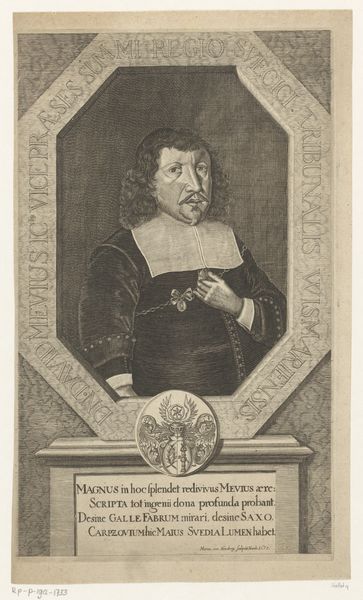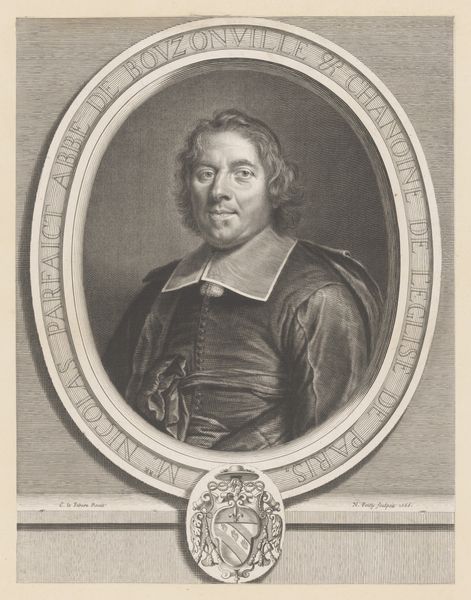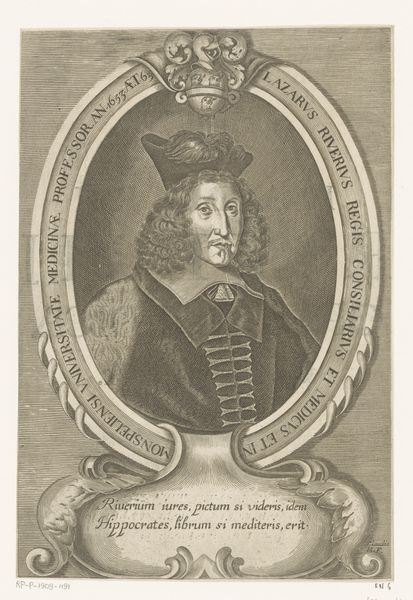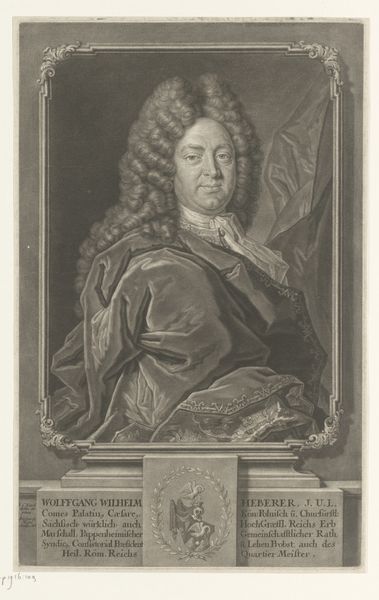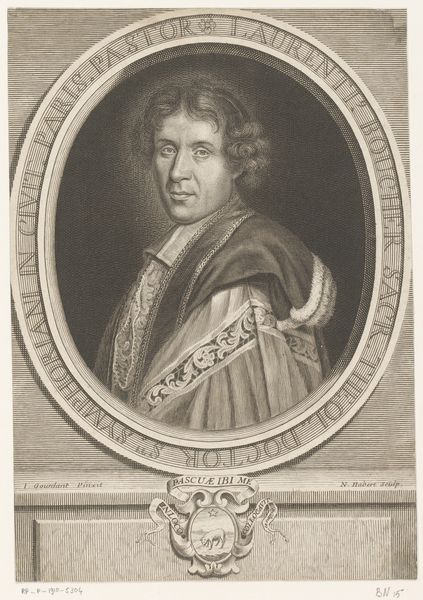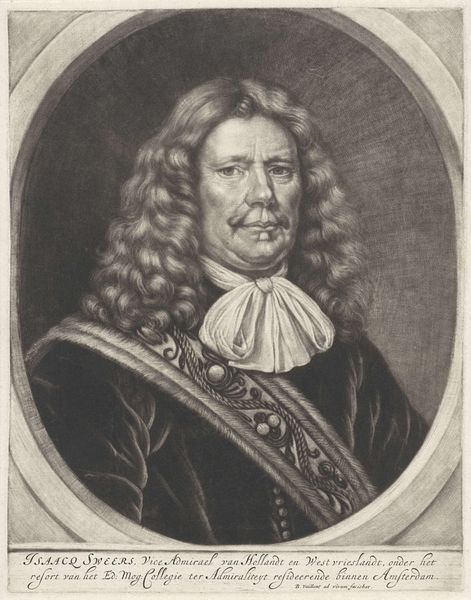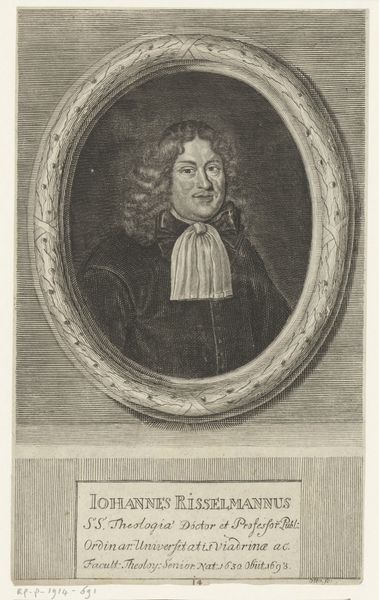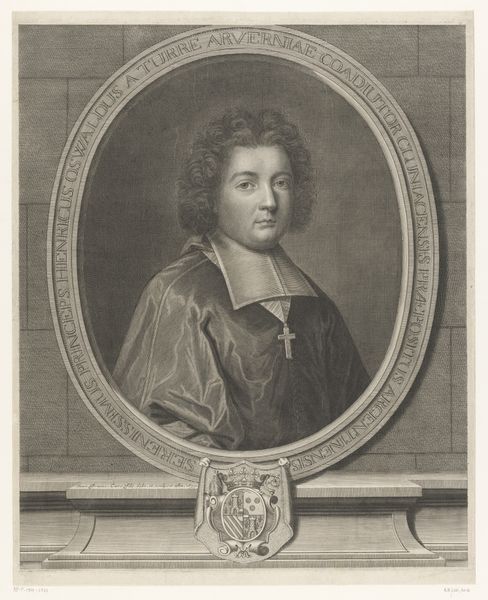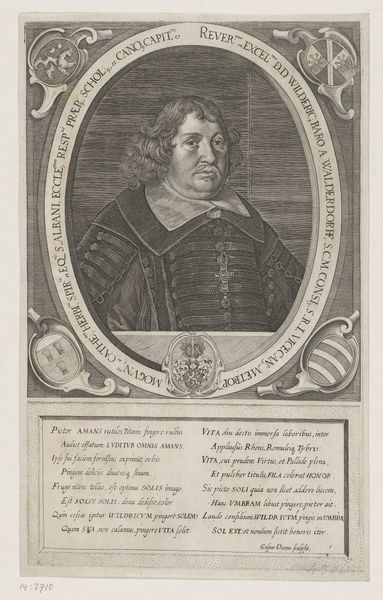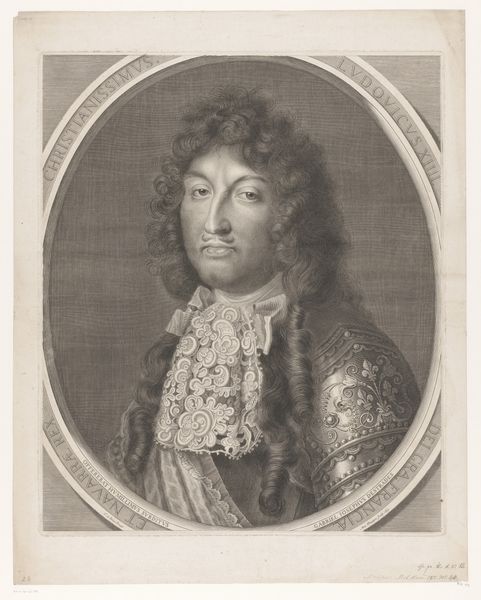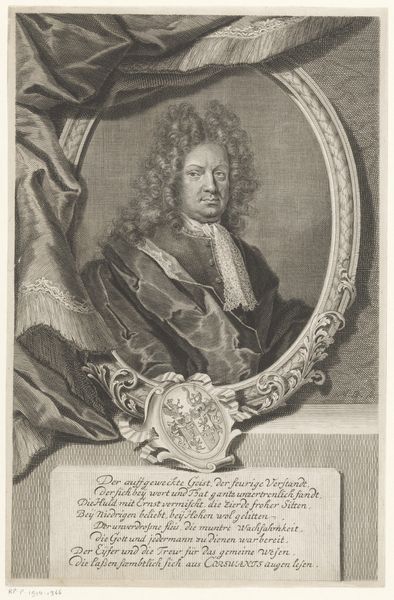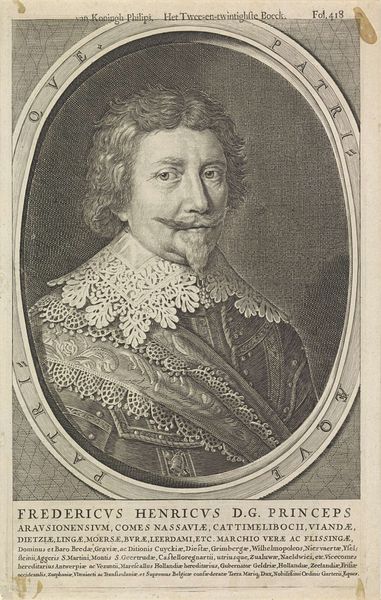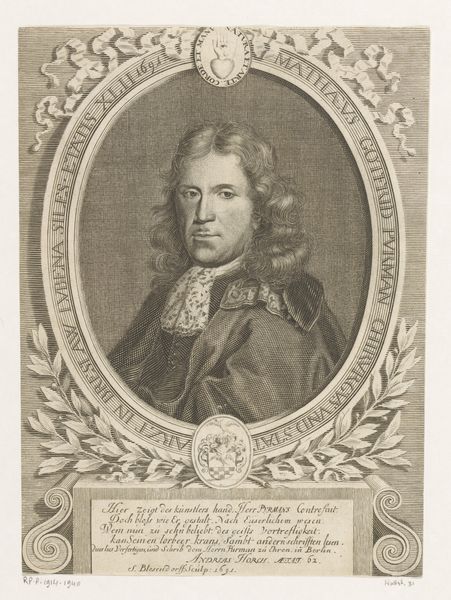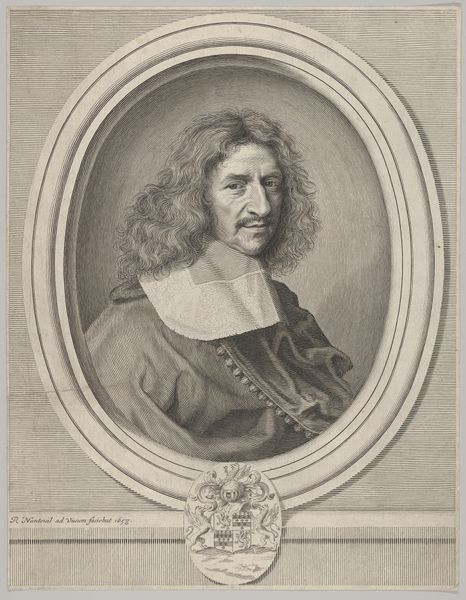
Portrait of Jan Cornelisz Meppel, Lieutenant-Admiral of Holland and West-Friesland 1661
0:00
0:00
oil-paint
#
portrait
#
baroque
#
dutch-golden-age
#
oil-paint
#
history-painting
Dimensions: height 106.5 cm, width 87.5 cm, depth 8 cm
Copyright: Rijks Museum: Open Domain
Curator: Jan Albertsz. Rotius painted this impressive "Portrait of Jan Cornelisz Meppel, Lieutenant-Admiral of Holland and West-Friesland" in 1661. It is a striking example of Dutch Golden Age portraiture. Editor: My initial thought is one of contained power. He's not overtly theatrical, yet there's a silent command radiating from his posture. The sea scene in the background does so much heavy lifting, doesn’t it? Curator: It absolutely does. Context is key here. Meppel was a significant figure in the Dutch navy during a period of intense maritime conflict and expansion. That small scene isn't merely decorative. It's a potent symbol of Dutch naval power and Meppel’s role within that machine. Editor: I agree. Notice the gold chain and medal. They're clearly meant to broadcast status, but in a way that's different than, say, a royal portrait. This feels more…earned? What can you tell me about such decorations in portraits of that period? Curator: They served multiple purposes. Firstly, as obvious displays of wealth and social standing – crucial in a mercantile society. But beyond that, they communicated allegiances, affiliations, and accomplishments, serving as a visual resume of sorts for ambitious men during a very competitive political and military climate. It shows both status and social performance. Editor: The naval ships at sea really evoke themes of exploration and ambition, and he’s almost leaning on his walking stick as a visual counterpart, I would suggest, reminding us that exploration wasn't solely about the open ocean. Back on shore, it required shrewd men of resources. His slight smile seems as though he knows something we don't, some strategic secret. Curator: I find myself contemplating how different his public persona would be to what we can imagine was the real person, off the canvas and away from his public duties. A powerful visual representation doesn't necessarily reveal all the truth of a man’s soul! Editor: Fair point! Looking at this painting, I find it really interesting to think how icons of power translate over time; in some ways, this has become almost a caricature through changing values, which is always fascinating to consider. Curator: Indeed, art as a constantly renegotiated representation of cultural values. A fitting reflection to close on.
Comments
No comments
Be the first to comment and join the conversation on the ultimate creative platform.

